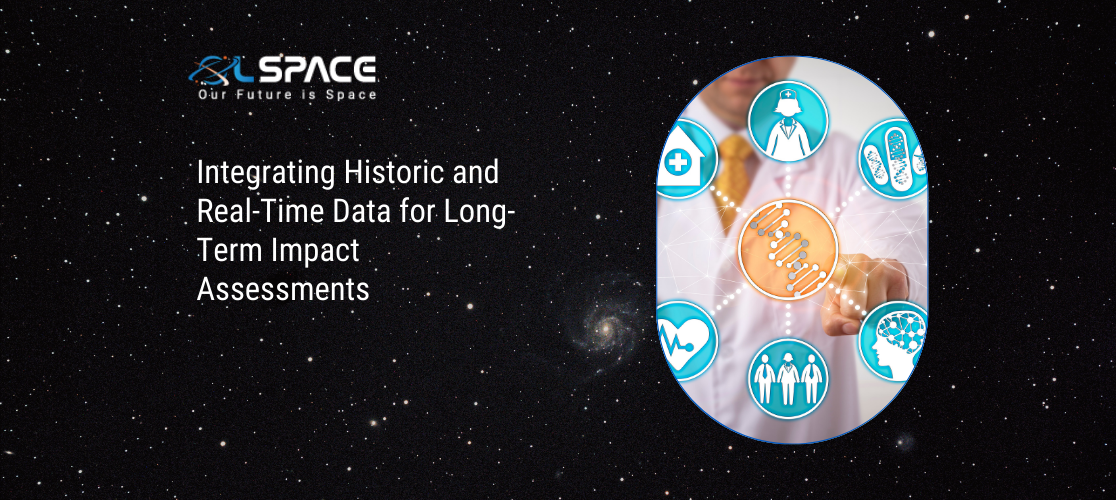17 October 2023
Integrating Historic and Real-Time Data for Long-Term Impact Assessments

Long-term impact assessments are crucial for understanding how various factors, such as environmental changes, infrastructure projects, or policy decisions, affect our world over extended periods. To achieve comprehensive and insightful assessments, the integration of both historic and real-time data is essential. In this blog, we will explore the significance of combining historical and real-time data for long-term impact assessments and how this integration can provide a more accurate and actionable understanding of complex issues.
The Importance of Long-Term Impact Assessments
Long-term impact assessments offer valuable insights into various areas:
1. Environmental Changes: Assessing long-term impacts of climate change, deforestation, or urbanization on ecosystems and natural resources.
2. Infrastructure Projects: Evaluating the effects of major construction projects, such as dams, roads, or pipelines, on local communities and the environment.
3. Public Policy: Analyzing the consequences of policy decisions on issues like public health, education, and socioeconomic factors over time.
Integrating Historic Data
Historical data provides a baseline for long-term impact assessments:
1. Establishing Trends: Historical data allows for the identification of trends and patterns, helping assess the impact of changes over time.
2. Baseline Comparisons: It provides a reference point for comparing past conditions with current and future data, enabling the measurement of change and impact.
. Assessing Legacy Effects: Understanding the legacy effects of past actions and their influence on present conditions and future projections.
Incorporating Real-Time Data
Real-time data is critical for tracking ongoing developments and immediate impacts:
1. Timely Monitoring: It allows for the real-time tracking of changes, enabling quick responses to emerging issues.
2. Adaptive Management: Real-time data facilitates adaptive management strategies, making it possible to adjust interventions or policies in response to evolving situations.
3. Early Warning Systems: Real-time data can be used to develop early warning systems for natural disasters, disease outbreaks, or other imminent threats.
Applications and Benefits of Integration
1. Environmental Sustainability: Combining historical and real-time data helps in the assessment of environmental sustainability by revealing long-term trends and immediate ecological changes.
2. Infrastructure Planning: For infrastructure projects, this integration allows for a comprehensive understanding of both past and present impacts, supporting better decision-making.
3. Public Health: Assessments in public health benefit from this integration by tracking health trends over time and responding to emerging health crises.
4. Economic Analysis: In economic research, combining data sources can provide insights into the long-term economic impacts of various factors, from trade policies to technological advancements.
5. Community Development: This integration is valuable in analyzing the long-term social and economic effects of community development initiatives.
Challenges and Considerations
1. Data Quality: Ensuring the quality and consistency of both historical and real-time data is a critical challenge.
2. Data Accessibility: Accessing relevant data sources, especially historical data, can be challenging, requiring collaboration with various stakeholders.
3. Privacy and Ethical Concerns: When dealing with real-time data, privacy and ethical considerations must be addressed, particularly in healthcare and social research.
Conclusion
Integrating historic and real-time data for long-term impact assessments provides a holistic view of how changes and interventions affect our world. By understanding both the past and the present, we can make informed decisions that lead to more sustainable environmental practices, better infrastructure projects, and more effective public policies. As technology and data collection methods continue to advance, the integration of historical and real-time data will play a crucial role in shaping our approach to long-term impact assessments.
